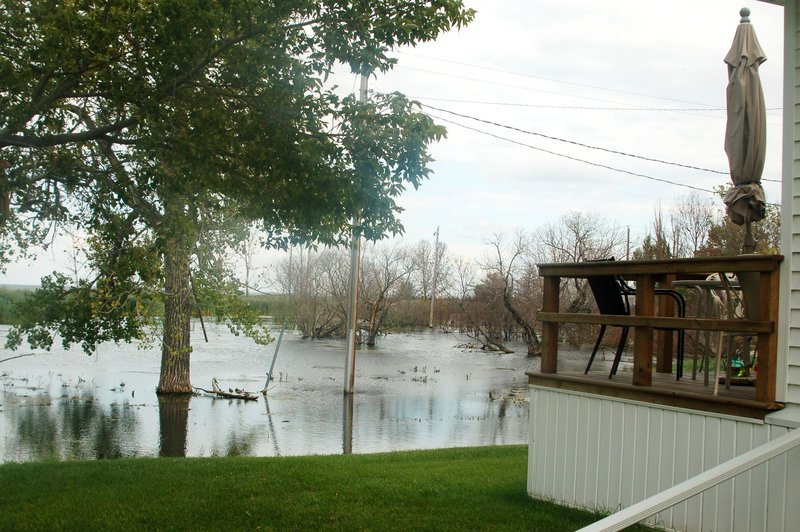DEVILS LAKE, N.D. – It’s been called a slow-growing monster: a huge lake that has steadily expanded over the last 20 years, swallowing up thousands of acres, hundreds of buildings and at least two towns in its rising waters.
Devils Lake keeps getting larger because it has no natural river or stream to carry away excess rain and snowmelt. Now it has climbed within 6 feet of overflowing, raising fears that some downstream communities could be washed away if the water level isn’t reduced.
And those worries are compounded by another problem: Scientists believe the pattern of heavy rain and snow that filled the basin is likely to continue for at least another decade.
“It’s a slow-moving torture,” said 72-year-old Joe Belford, a lifelong resident of Devils Lake and a county commissioner who spends most of his time seeking a way to control the flooding and money to pay for it.
No other place in America has faced such a dilemma. The nation’s only other significant “closed-basin” lake is the Great Salt Lake, which was in danger of flooding housing developments in the mid-1980s. But shortly after the state spent $70 million on huge pumps, a dry spell began. Those pumps now stand idle.
“We’re unfortunately or fortunately — I don’t know what it is — pretty unique,” said Dick Johnson, mayor of Devils Lake, which has nearly 7,000 residents. The constant flooding “doesn’t have the immediate impact that a hurricane or typhoon might have, but it’s devastating.”
Since the water began rising in the early 1990s, more than 400 homes around the lake have been relocated or destroyed.
The lake, about 160 miles northwest of Fargo, is the largest freshwater body in North Dakota, with an estimated shoreline of at least 1,000 miles. It’s up to 75 feet deep and has attracted tourists from across the nation with excellent fishing and other recreational activities.
But local people and politicians are fretting that the lake is a catastrophic flood waiting to be released in their direction.
In the tiny town of Minnewaukan, the lake was once eight miles away. Today it is lapping at the community from three sides, and residents are begging for help.
“This is tearing people apart,” said Minnewaukan Mayor Trish McQuoid, fighting back tears. Proposals include moving the entire town to higher ground.
By the end of 2010, the federal government will have spent more than $1 billion to ease the threat, buying flooded property, building dikes and making other improvements. That figure does not include a $27 million floodwater-diversion channel built by the state on the west end of the lake. It also costs $330,000 a month for the electricity for pumps to take 1 inch off the lake.
All of those measures are considered temporary. The final solution — and its cost –is not known.
“The issue of stopping the flooding and trying to get water out of that lake is complicated,” said Sen. Byron Dorgan, a North Dakota Democrat. “If it weren’t complicated, it would have been solved long ago.”
Send questions/comments to the editors.



Success. Please wait for the page to reload. If the page does not reload within 5 seconds, please refresh the page.
Enter your email and password to access comments.
Hi, to comment on stories you must . This profile is in addition to your subscription and website login.
Already have a commenting profile? .
Invalid username/password.
Please check your email to confirm and complete your registration.
Only subscribers are eligible to post comments. Please subscribe or login first for digital access. Here’s why.
Use the form below to reset your password. When you've submitted your account email, we will send an email with a reset code.